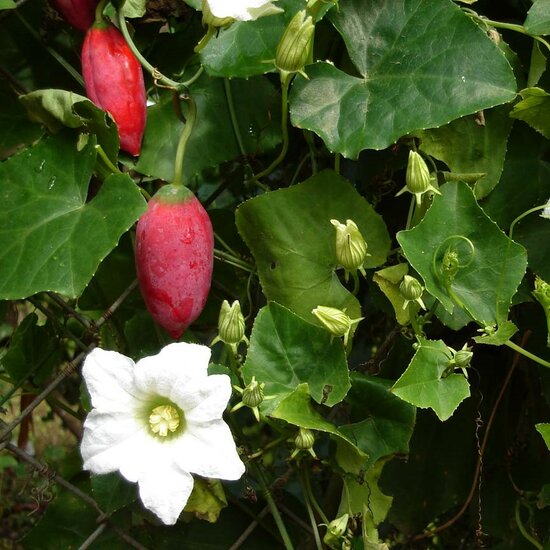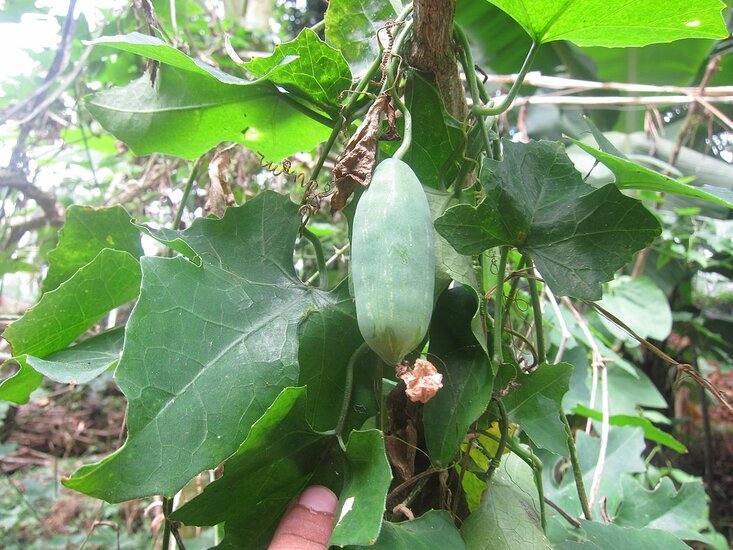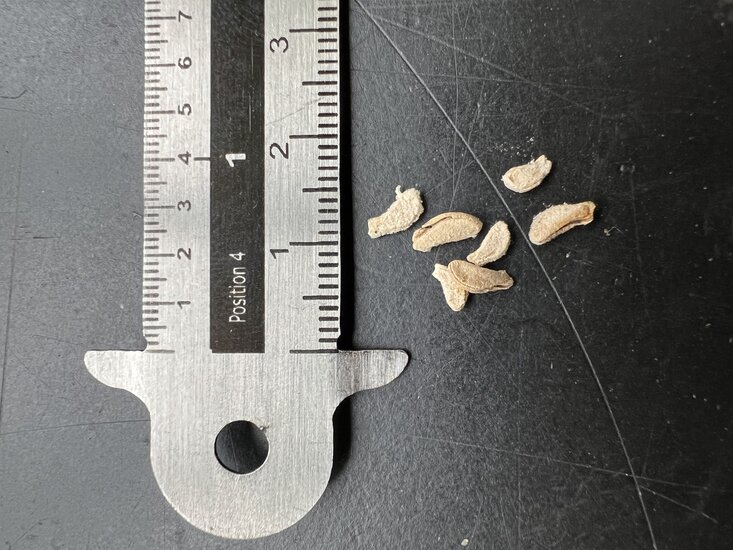Do you have a question about this product?
Ask us your question






Product description
The tindola can be eaten fresh as a cucumber or added as a vegetable to a variety of dishes. The fruit is especially popular in India and Thailand as an ingredient for curries, but is also used in other Asian cuisines. The taste of the fruit itself is quite watery, but it absorbs the flavours of the sauce well, making it a delicious addition. It is a climbing plant from the drier regions of south-east Asia that can reach a height of 20 metres there climbing trees. The flowers are white and are followed by green fruits with light stripes. When ripening, the fruits turn to a red colour and are then about 6 cm in size. The plant is dioecious, requiring a male and female plant for fruiting. It is therefore best to grow at least 2 plants interchangeably to make this possible.Cultivation is best in a greenhouse or conservatory, but in a sunny, sheltered spot in the garden it is also possible to get the plant to set fruit. Outside, the plant will grow as an annual and die in autumn. In a frost-free location, it can also grow as a perennial and develop woody stems. Provide sandy soil and plenty of water.
Sowing description: Sow seeds in sowing soil and allow to germinate at 22-28grC. Germination usually after a few weeks. Keep soil constantly slightly moist beforehand.
Product specification
Family:
Cucurbitaceae
Scientific name:
Coccinia grandis
Common name:
Tindola
Native to:
Southeast Asia
Sowing time:
January-April
Difficulty level:
Intermediate
Minimum temperature:
5 degrees Celsius
Do you have a question about this product?
Ask us your question
Product specification
Family:
Cucurbitaceae
Scientific name:
Coccinia grandis
Common name:
Tindola
Native to:
Southeast Asia
Sowing time:
January-April
Difficulty level:
Intermediate
Minimum temperature:
5 degrees Celsius
Add review
Write a review about this product.
Reviews
No reviews yet



